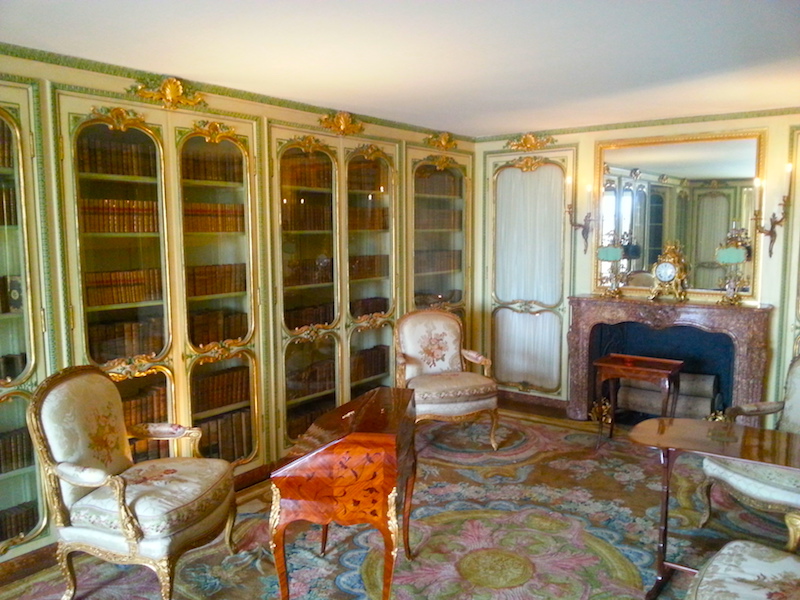
Today we visit Madame Victoire’s apartment at Versailles.
Louis XV had 8 daughters, of whom 7 survived to adulthood, and of whom 2 lived long enough to see the Revolution. Mme Victoire, born in 1733, was the younger of those two. Like all but one of her sisters, she was sent away from Versailles to the abbey of Fontevrault for her education. As a Daughter of France, i.e. the daughter of a reigning king, she was called Madame rather than Mademoiselle even though she never married. This portrait of her was painted when she returned to live at Versailles at the end of her schooling in 1748.
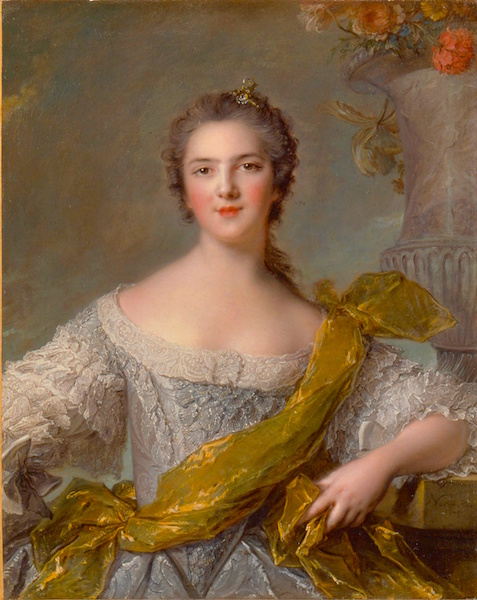
Mme Victoire by Nattier. Credit: Wikipedia
Curiously, only one of the sisters married. This was the eldest, Mme Louise Elisabeth, known simply as Madame, later as Madame Infante when she was married at 13 to the Infante Philip of Spain, a younger son of Philip V. He later inherited his mother’s sovereign duchy of Parma,* thus making him and Mme Louise Elisabeth the founders of the house of Bourbon-Parma,** whose descendants now include all the Catholic royalties of Europe.
By the time their nephew Louis XVI came to the throne in 1774, only 3 of the sisters were left at Versailles: Mme Adelaide, Mme Victoire, and Mme Sophie, who died in 1782. Mesdames Adelaide and Victoire remained in the apartments that we see today until the royal family were forced to leave the Chateau in October of 1789. The sisters withdrew to their estate at Bellevue, from which they fled in 1791 to seek refuge in Italy. Mme Victoire died of breast cancer in Trieste in 1799, leaving Mme Adelaide the sole survivor of the sisterhood until her own death the following year.
In her final years at Versailles, Mme Victoire luxuriated in a suite of 6 principal rooms: an antechamber, a salon, a large drawing room, a bedchamber, a small drawing room, and a library. Few people at Versailles had such spacious lodgings. Even duchesses had to make do with a garret if they were not in favour, and anyone who could afford it kept a house in the town of Versailles as an escape from their cramped quarters in the Chateau.
For some reason, I didn’t take a photo of the antechamber, so our tour will begin with the salon, called the Salon des Nobles.
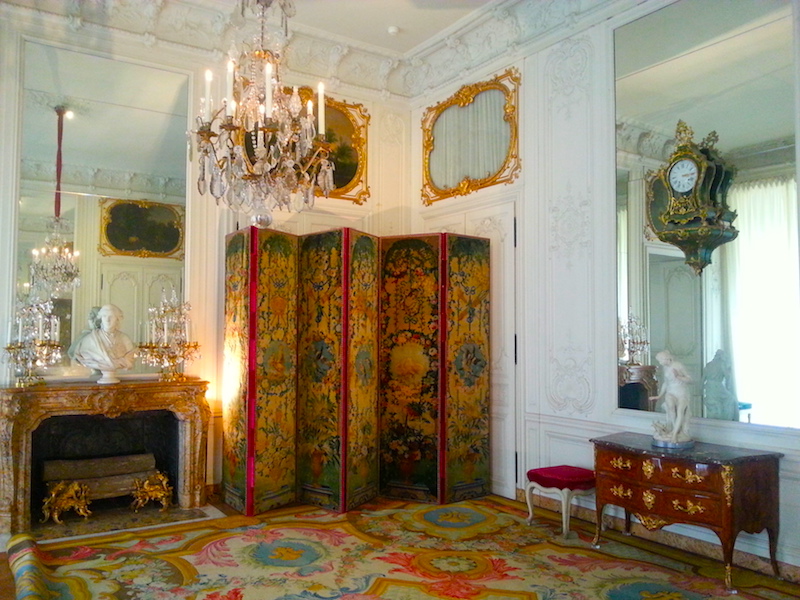
The Salon des Nobles.
It’s important to note that the furniture you see in these rooms is not necessarily the original furniture, which was dispersed during the Revolution. In some cases, it’s been bought back or donated, or sometimes pieces from other royal residences are substituted. In the apartments of Mesdames, some of the furniture was in fact originally at the Chateau de Bellevue.
The large drawing room, known as the Grand Cabinet, prominently features a harpsichord.
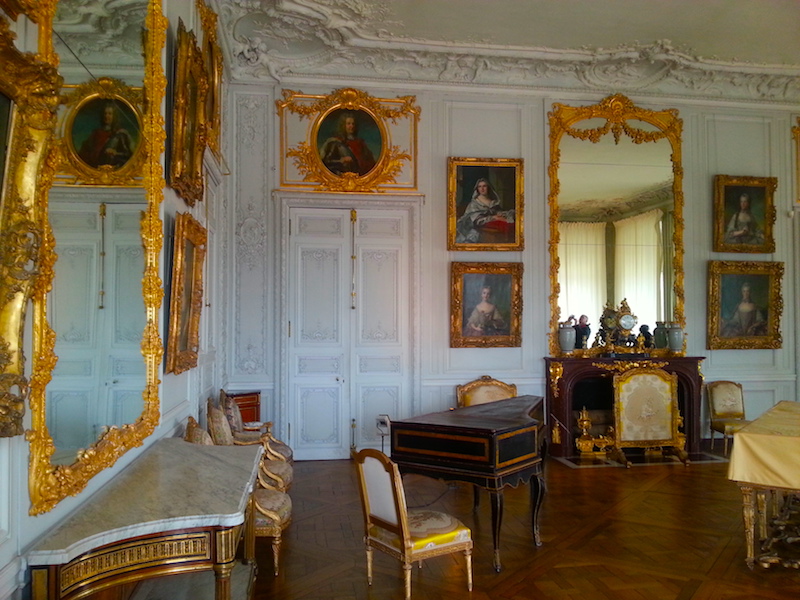
The Grand Cabinet.
All the sisters were proficient musicians. Mme Victoire’s instrument was the harpsichord, which she is said to have played quite proficiently. The young Mozart, in fact, dedicated his first harpsichord sonatas to her.
Mme Victoire’s bedroom, called simply her Chambre, contains portraits of the sisterhood.
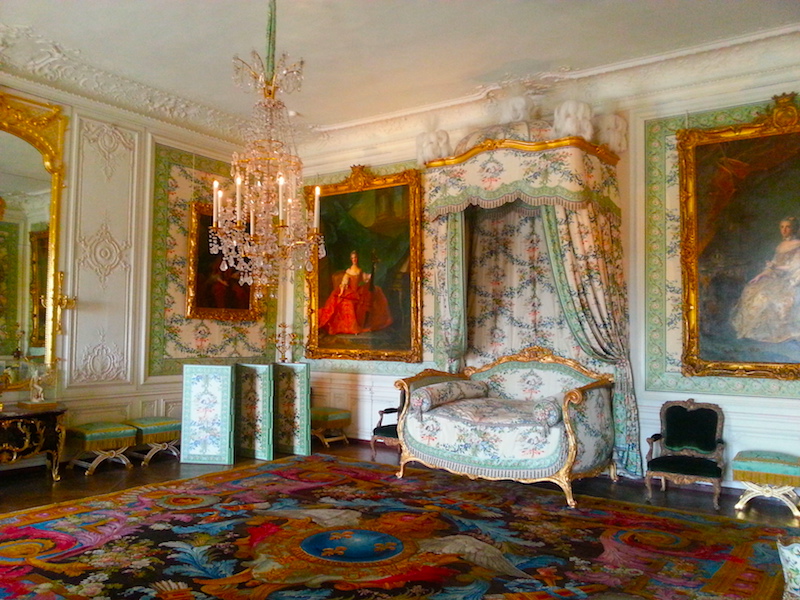
The Chambre.
It didn’t strike me at the time, but looking at this photo now, I’m very struck by the magnificent carpet.
The next room is considerably smaller than the preceding ones. This is Mme Victoire’s small drawing room, known as the Cabinet Interieur (please excuse the lack of French accents — I have yet to learn how to do them on my new Mac!).
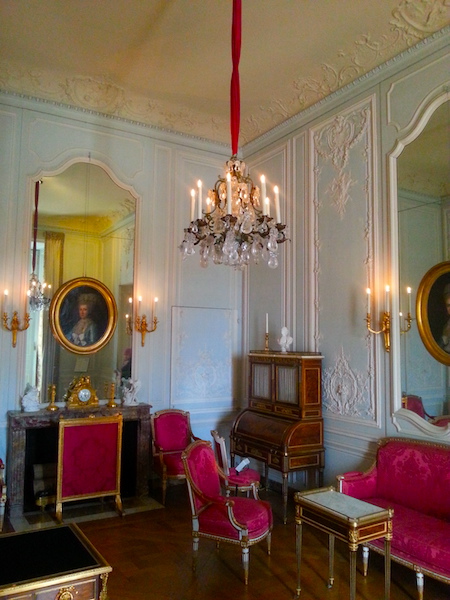
The Cabinet Intérieur. For some reason, the accents are automatic for captions.
I love the contrast of the pale blue walls and the red upholstery.
The last of Mme Victoire’s rooms is my favourite: the library, straightforwardly called the Bibliotheque.

The left side of the Bibliotheque.
Of course, I love the books. The other thing I love is the intimate scale of this room. This is one of the few rooms at the Chateau that I could actually imagine living in. The low ceiling would have made it easier to heat, for one thing.
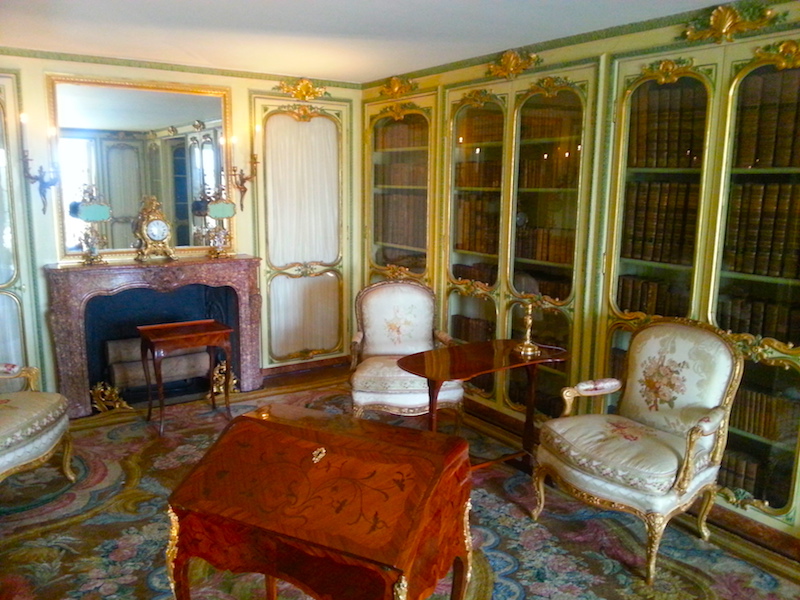
The right side of the Bibliotheque.
I remember that the information plaque identified the chairs as having come from Bellevue.
In this suite, as in all the other royal apartments at Versailles, there is a parallel row of service rooms behind the back wall. It would be fascinating to see them, but they’re not open to the public, and I suspect they remain unrestored.
This brings our visit to Mme Victoire’s apartment to a close. We’ll visit her elder sister Adelaide’s rooms in a future post.
Which room is your favourite?
*Philip’s mother was Elizabeth Farnese, the last member of the house of Farnese, hereditary rulers of Parma. She passed Parma to him, rather than to one of his 2 older brothers, because they were already positioned to inherit the Spanish and Neapolitan crowns, respectively, from their father.
** The Bourbons of Parma, like the Bourbons of Naples, were offshoots of the Bourbons of Spain, who came by their throne when Louis XIV claimed it on behalf of his second eldest grandson, who became Philip V. This was possible because Louis XIV’s wife had been the only sibling of the last Hapsburg king of Spain. The eldest grandson was passed over because he was destined for the French throne.







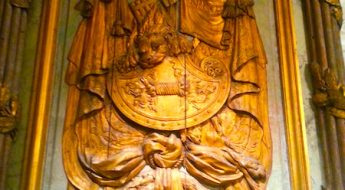
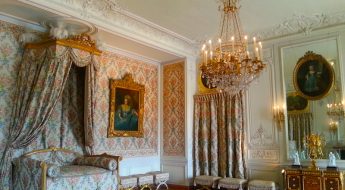








Leave a Comment